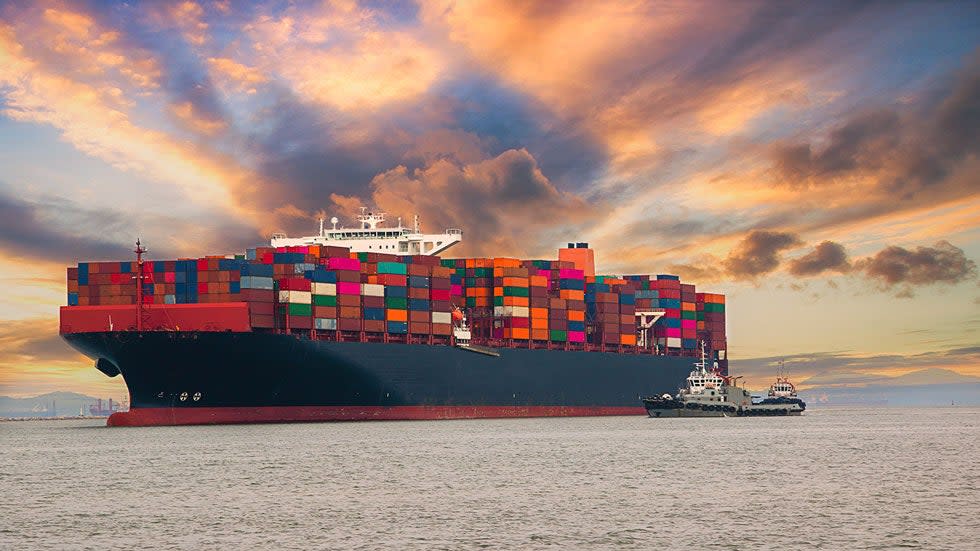American supply chains face a dire threat from China's water shortages

There's no scarcity of reasons why your holiday shipments may not arrive on time. COVID-19 disruptions, congested ports, semiconductor shortages, stretched trucking capacity - the list goes on and on.
Water - or rather, the lack of it in China - may be the factor that pushes U.S. supply chains over the edge.
Water is an unseen, vital input for all economic activity. Beyond agriculture, water is critical for power generation, mining, industry and the consumer products we rely on every single day. Like the estimated 3000 gallons of water that it takes to make the typical smartphone.
As it turns out, China is drastically short of the water it needs to maintain its economy. China's per capita water availability is one-quarter of the global average, and nearly 700 million of its citizens live in regions considered highly water-stressed. Meanwhile, groundwater depletion has been so significant in the areas around Beijing that parts of the city are falling into the earth by more than 14 centimeters a year.
China's water shortages are showing up most acutely in electrical power generation, where the nation's hydroelectric and coal power producers are struggling with irregular water access. Authorities have responded to the widespread power outages by clamping down on industrial energy consumption, resulting in major disruptions to China's manufacturers.
And that's where America's supply chain comes in. The U.S. imports massive quantities of manufactured goods from China, including 70 percent of Walmart's store merchandise, and 40 percent of the clothing sold domestically. China is also a huge producer of key industrial products that end up on American shores, like steel, aluminum and polysilicon used to make solar panels.
Embedded in the manufacturing of these products is electricity generated through unsustainable water consumption in China. And as water supplies dwindle, the net effect is fewer products coming to the U.S. at significantly higher prices.
The long-term outlook for water availability in China is alarming, and has resulted in drastic measures by its government. These include a massive project to transfer water from South China to North China, shifting manufacturing away from water-stressed regions, and even widescale atmospheric interventions referred to as "cloud seeding" to boost rainfall. Given the scale of the problem, these amount to band-aid solutions to cover a gaping wound.
Desalination from the ocean is not a viable option, as it is a highly-energy intensive process, and half or more of the water produced from desalination can be lost to power consumption. In addition, given the current strains on China's power grid, it is unlikely that enough spare capacity can be found to desalinate and transport large quantities of water to China's dry regions.
None of this comes a surprise to Chinese officials. In 2005, former Chinese Premier Wen Jiabao remarked that water shortages threatened "the very survival of the Chinese nation," while planning officials in Beijing have tried for decades to cap the city's population below 10 million due to limited water resources (Beijing's current population is 21 million). The difficulty is that solving the water supply problem involves painful economic trade-offs between agriculture, industry and households that are politically challenging, even in a nation governed by a single party.
China's water shortages are also a major issue for energy markets and seriously complicate efforts to decarbonize the global economy. Electricity generated from natural gas consumes half as much water as coal-fired generation, and China's insatiable demand for imported natural gas is pushing up energy prices in the U.S. and abroad. In addition, numerous Chinese officials have stressed that wind and solar energy is not reliable enough to allow for the wholescale transition away from China's heavy reliance on coal power. When examined through the lens of its current water and power problems, it's easy to understand why China's presence at COP26, the recent UN climate summit, was half-hearted at best.
All of this is to say that the U.S. economy is at significant risk until a long-term solution is found for China's water problems. Recent discussions regarding the shift of U.S. supply chains away from China have focused on national security and domestic policy considerations. Given the severe challenges posed by China's lack of water, it may be a question of economic necessity.
Gopal Reddy is the founder of Ready for Climate, an independent, non-partisan research organization focused on the national security and macroeconomic risks stemming from climate change. Previously he was the founder and CIO of a long/short equity hedge fund and served as a portfolio manager at Fidelity Investments.

